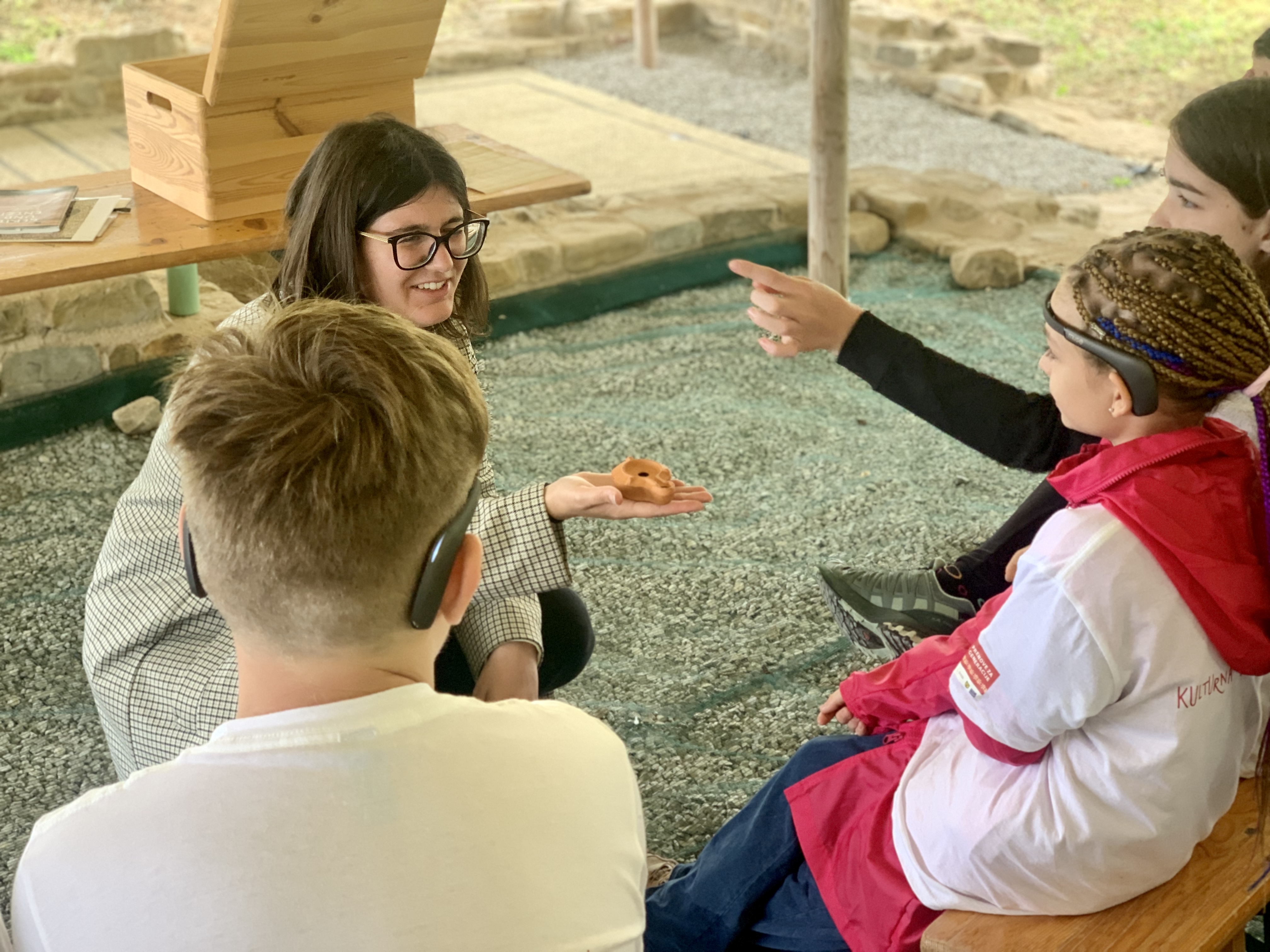
8 June 2023 – On Monday, 5 June 2023, Faculty of Humanities Koper hosted a press conference for the project HERITAGE SCHOOL FOR NEW GENERATIONS where project partners presented the project and the project activity that took place on the same day at the Archaeological Park in the Simonov zaliv bay.
Barbara Možina, the coordinator of the project promoter, the Association of Historic Cities of Slovenia, underlined that the main objective of the project is to promote the inclusion of cultural heritage topics in lessons and activity days by developing new practices of teaching, didactic tools, and transferring experiences and good practices from the Norwegian teaching system. The project, supported by the Norwegian Financial Mechanism, focuses on developing and testing new practices of teaching in cooperation with the Institute for the Protection of Cultural Heritage of Slovenia, Faculty of Humanities of the University of Primorska, School Centre Škofja Loka, Secondary School of Woodworking, Primary School Ivan Grohar, Municipality of Škofja Loka and the Norwegian organisation MAGMA Geopark AS.
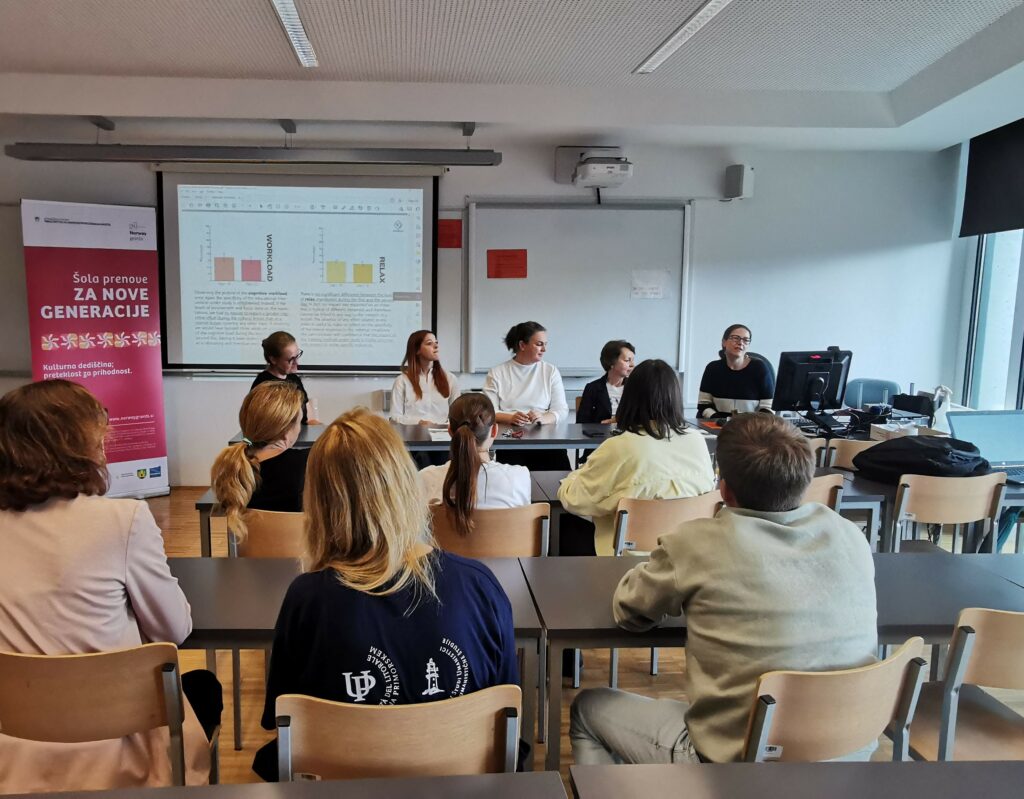
The Dean of the Faculty of Humanities of the University of Primorska, Prof. Dr. Irena Lazar, underlined that professionally developed content in the field of cultural heritage, such as guidebooks, teaching aids, teaching preparations and guidelines, is significant for the planning of activity days. It is also a good incentive for primary school teachers to include more cultural heritage content into primary school teaching.
Assistant Professor Dr. Zrinka Mileusnić, the coordinator of the project partner Faculty of Humanities of the University of Primorska, presented the activities of the Activity Day for the pupils of the Primary School Ivan Grohar in Škofja Loka, who participated in the Cultural Day programme in the Archaeological Park in the Simonov zaliv bay. The students of the Faculty of Humanities of the University of Primorska, mentored by Assistant Professor Dr. Zrinka Mileusnić and the professional staff of the Archaeological Park, prepared a comprehensive educational programme with a tour of the park, the Roman mosaics and the remains of the residential part of a Roman villa, as well as a guided experience of the interactive interpretation centre and a workshop on the Roman script. The interpretation centre in the park, the conservation and presentation of the villa’s remains and the harbour, and the inclusion of the park into the cultural and tourist offer are a result of project AS, supported by the EEA Financial Mechanism in the previous period 2009-2014.
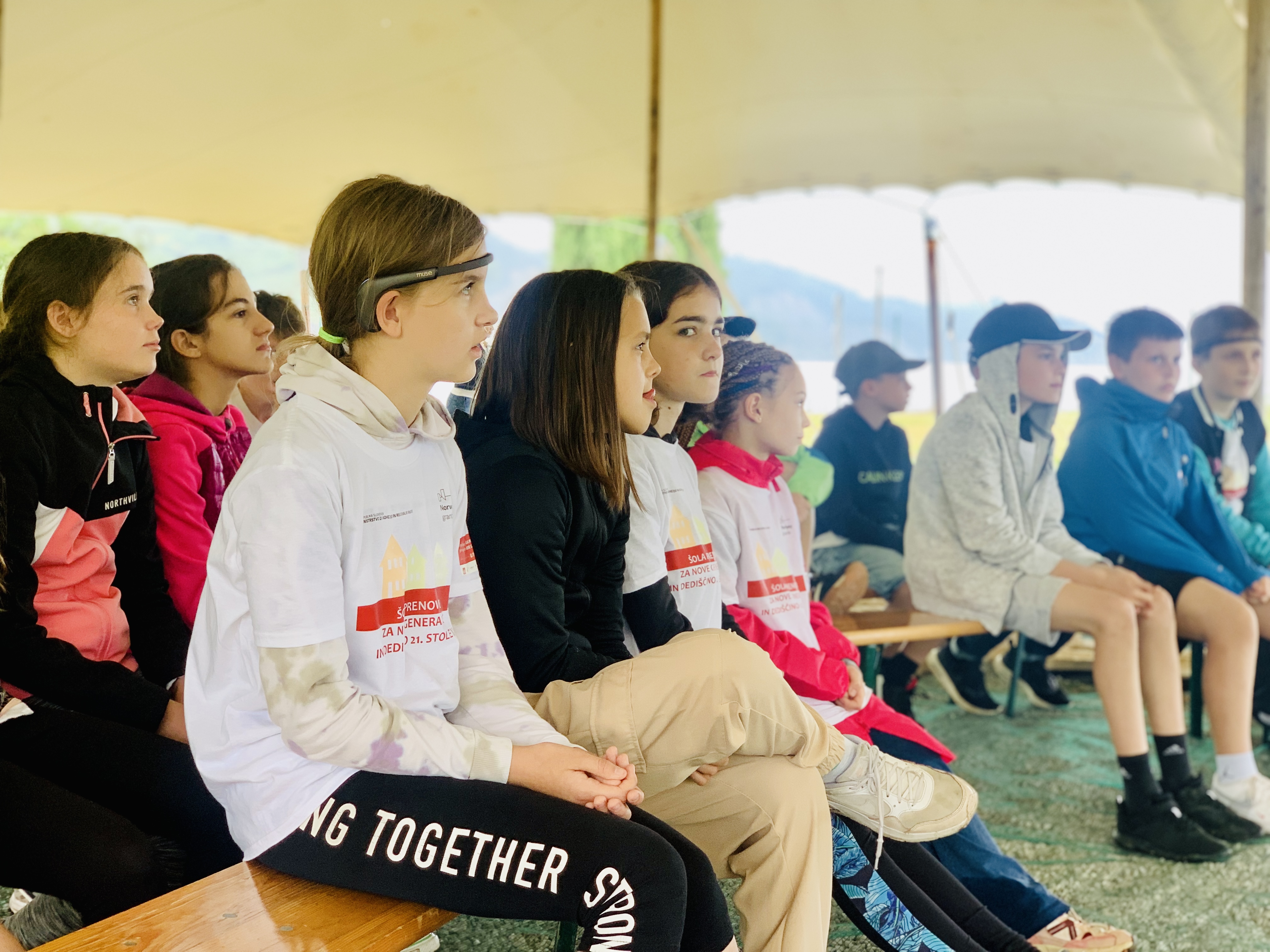
The aim of the programme was to offer pupils an interactive and dynamic form of learning, in addition to classical forms of learning, namely through innovative teaching methods, which are part of the project’s new teaching practice. The aim of comparing the two teaching methods is to establish a scientifically validated comparison of various teaching methods for the same cultural heritage content, not only based on the impression of the pupils and teachers but also through neurological testing of the pupils during the learning experience.
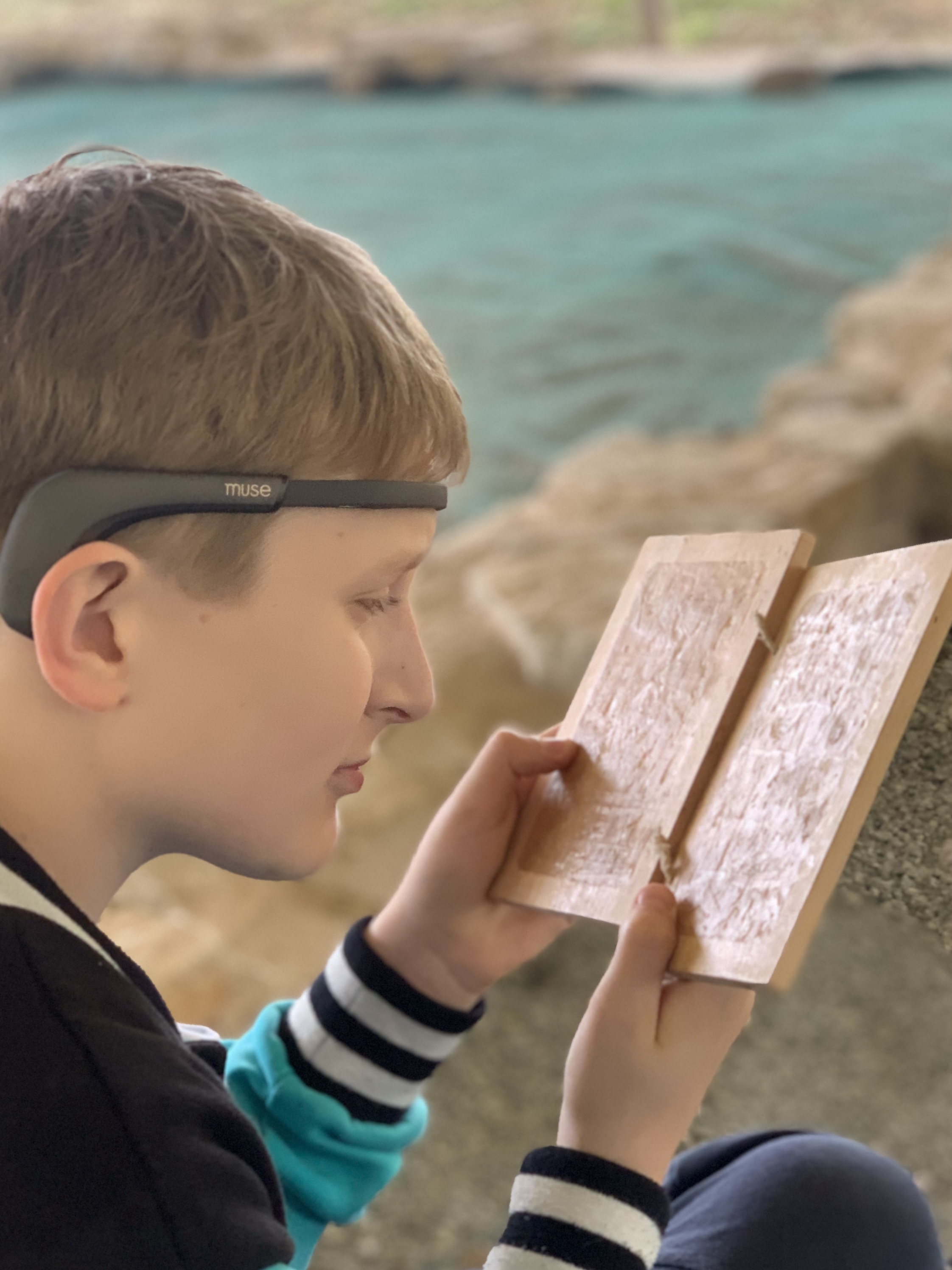
Psychologist and neuroscientist Andrea Bariselli participated in developing the new teaching practice. He and his team tested the pupils with the so-called portable EEG devices. The devices record the electrical activity produced by the brain. The main purpose of the testing is to measure the cognitive response in the perception and processing of stimuli by using techniques specific to applied neuroscience to investigate the experiences of a group of pupils during different teaching methods. The gathered data is used to observe changes in levels of cognitive load, attention, engagement and perceived well-being during planned activities.
The project coordinator at the Primary School Ivan Grohar in Škofja Loka, art teacher Petra Primc Marko, said “On Monday, 5 June 2023, seventy 5th grade pupils visited the Archaeological Park in the Simonov zaliv bay, as part of their outdoor learning trip. The interesting programme also offered neuro-testing for the project Heritage School for New Generations. Almost all pupils were involved in the testing; the project is now well-known in the school and parents are also well-acquainted with it. We are all very proud to be part of this. The neuro-testing is in its second stage, and the activity day has been completed; now we have to wait for the results. The project also aims to set up a didactic corner in cooperation with the School Centre, the Department of Woodworking. To this end, part of the school will be given a new look and purpose, full of cultural heritage. We expect its completion at the beginning of the next school year. The corner will be called Pod Homanovo lipo.”
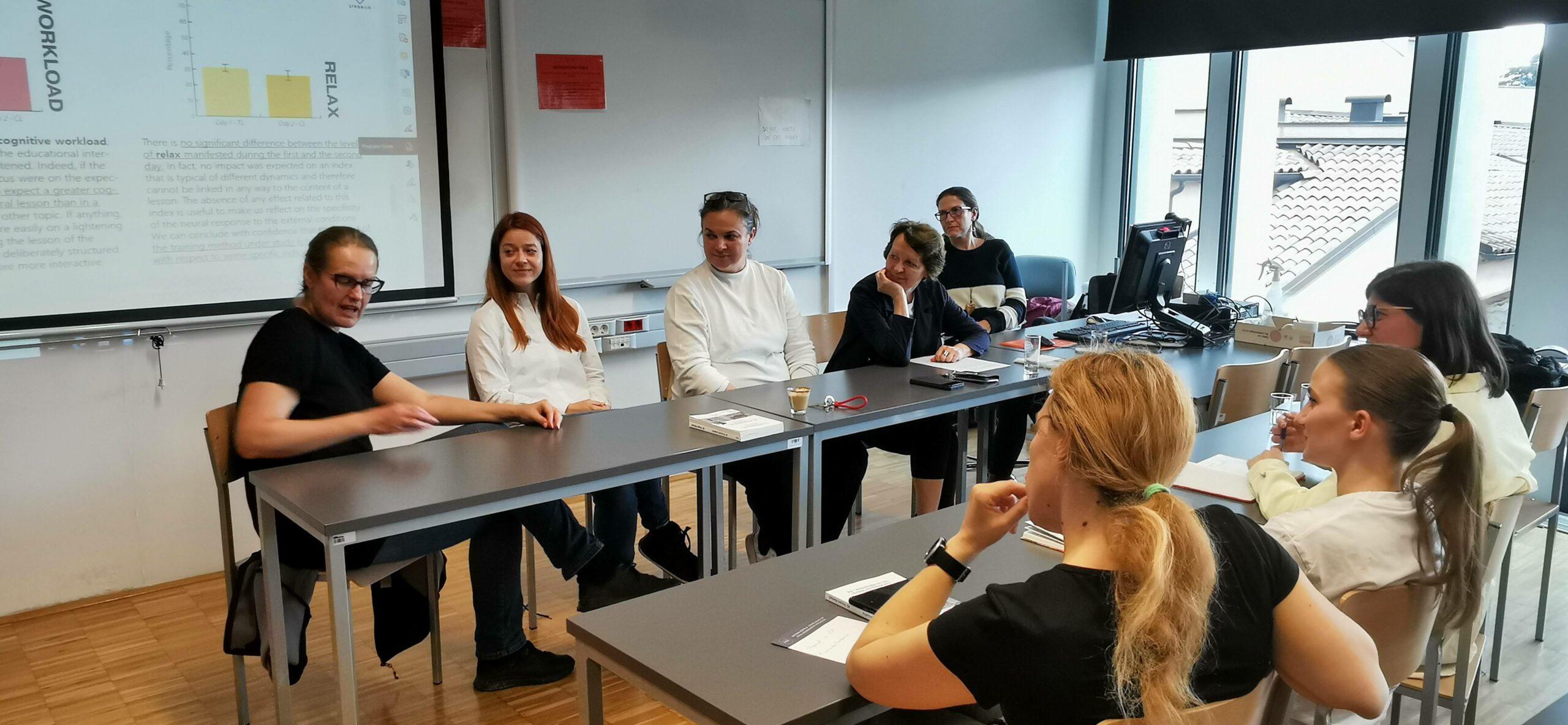
At the end of the press conference, Nataša Ülen, the coordinator of the project partner Institute for the Protection of Cultural Heritage of Slovenia, who is developing content to support teachers in teaching about cultural heritage, said “The project aims to bring cultural heritage closer to teachers and, indirectly, also to pupils. Cultural heritage is rapidly disappearing in the area, having to adapt to new and foreign trends and its immediate surroundings are being transformed beyond recognition. Traditional skills and old knowledge, and with it, a variety of traditional professions, are forgotten. The very identity of our area is gradually being lost. In April, as part of the project, we carried out testing with Mr. Bariseli in the classrooms of the Primary School Ivan Grohar. To summarise, the project’s first results revealed an extremely positive effect on the learning process compared to traditional teaching in the classroom.
The project aims to provide teachers with as much professional support as possible, which is why the project’s first task was to carry out detailed analyses of the curricula for individual subjects. By analysing the existing compulsory content, we looked for cultural heritage terms that c be introduced or interpreted to pupils while at the same time establishing as many links between various curricula as possible. By linking the subjects, teachers can give a more concise, multi-level explanation while also gaining some time for other subjects. Pupils were given a chance to experience new concepts more vividly, resulting in a more in-depth knowledge consolidation. The Institute for the Protection of Cultural Heritage of Slovenia also prepares teacher’s guidebooks for individual 3-year periods, with open learning and training sessions to follow in the coming months.”
You are welcome to follow the project’s achievements on the dedicated project website: Heritage School for New Generations.